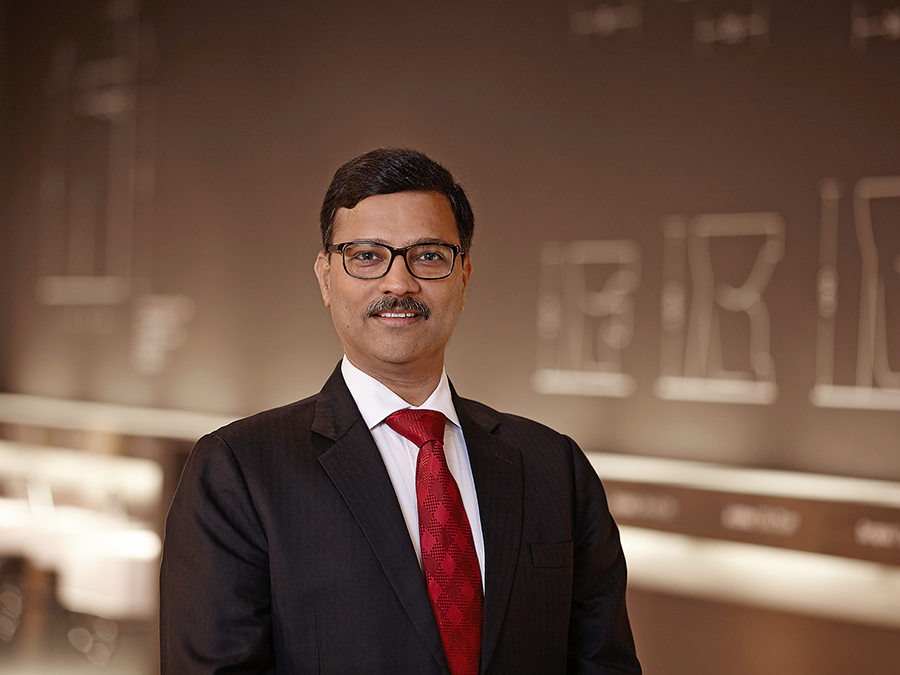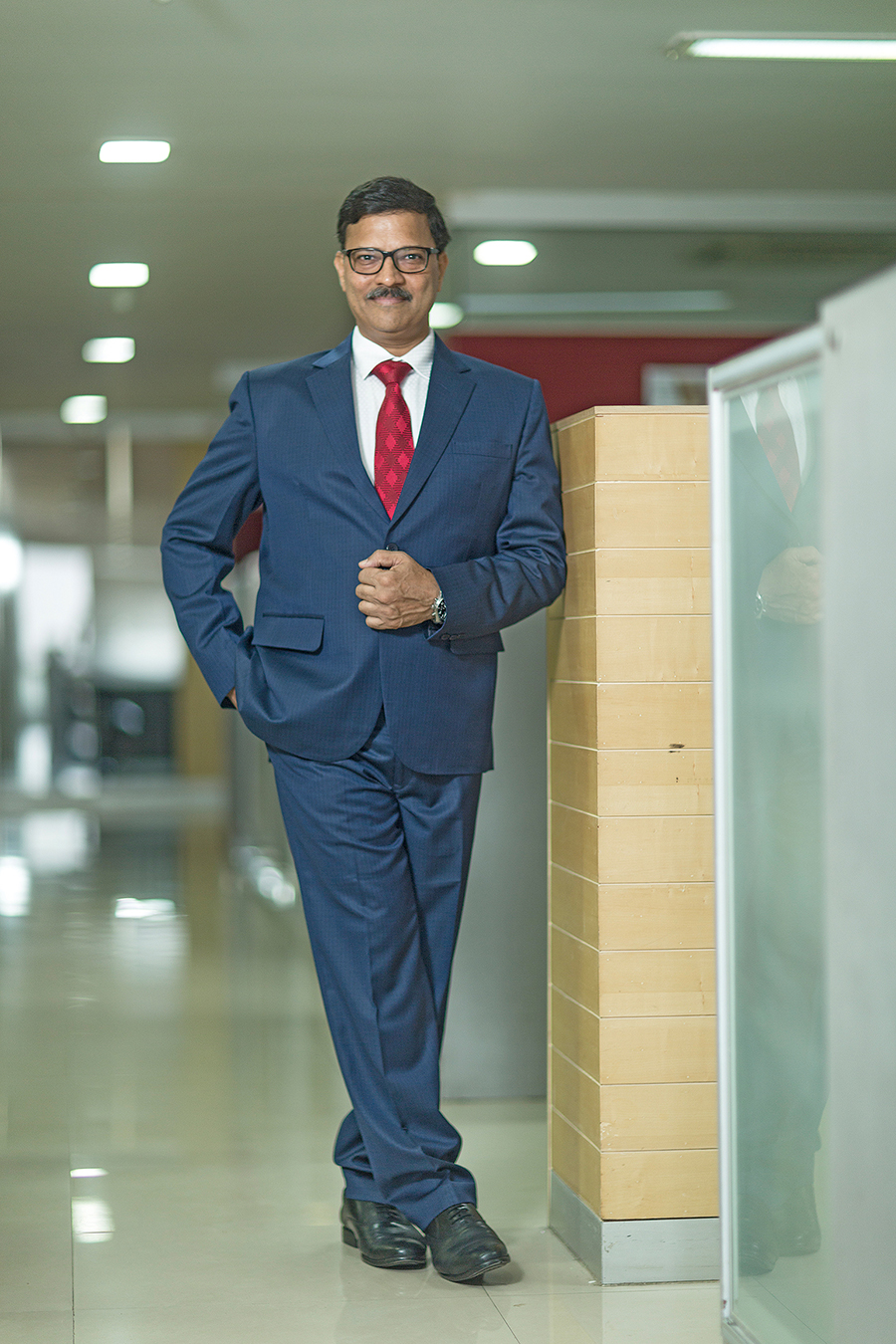On 24 March, India’s government gave its citizens a few hours’ notice that a nationwide lockdown would come into effect to curb the spread of COVID-19. People were confined to their homes, and businesses were ordered to a halt.

As many companies buckled under the punishing weight of these months of inactivity, Duravit India, a manufacturer of premium porcelain bathroom fittings, has managed to adapt and survive.
“It is times like these that prove the importance of planning,” says Asutosh Shah, who has served as Managing Director of Duravit India’s Gujarat facility for the past 18 years.
“When the outbreak began in India, it was easy for us to maintain social distancing because our plant was designed to give workers lots of space. We began thermal checks well before the government required it. Even under lockdown, after we closed the plant, it has been easy for us to shift to work from home because our sales staff have been working from home for many years already,” he says.
Duravit India is a subsidiary of Duravit AG, based in Hornberg, Germany and founded in 1817. Other Duravit facilities are located in France, Egypt, China and Tunisia.
Asutosh’s team remains busy filling orders that were placed before the lockdown, and thanks to the company’s longstanding practice of keeping surplus inventory, Duravit India is also preparing to take new orders in cases where its competitors fail to deliver.
“We do not foresee any interruption to customer delivery when we start again because we have that cushion. We can cope with any deficit,” Asutosh says.
“When the lockdown is lifted, we will have a chance to see how the market responds to the preparations we’ve made and, based on that, we will make adjustments to optimise our cashflow and restore our business operations to normal. There may be reduced sales and we may need to reduce costs in some places, but I believe that the main takeaway will be that we responded early and adapted quickly to these new challenges.”
Ripe for expansion
By 2021, Asutosh says Duravit India’s manufacturing output will double from its pre-COVID level of 200,000 porcelain units per year to 400,000. However, this boost in production poses a new challenge.

“Duravit is a premium brand, and we are operating in a market where it is always hard to sell a premium product,” he explains. Fortunately, the company’s successes last year provided the inspiration for Asutosh’s new blueprint for expansion over the next few years.
In the last quarter of 2019, Duravit India began to receive large orders from new customers in smaller cities like Nasik and Visakhapatnam, offering a glimpse of the way forward for the company.
“We are bracing for a growing number of new customers. At the moment, apartment developers in these areas would find it very hard to buy a brand like Duravit and pay the price for the quality and design we offer. However, that is changing. Rising disposable income and growing demand for luxury products in the cities has led to several big-ticket projects, which are under construction in these cities and showing interest in what we offer,” Asutosh says.
“The next phase of our growth will surely come from large orders from these Tier-2 Indian cities.” Duravit products appeal to a growing class of Indians who are earning more money than their parents did, who have travelled to other parts of the world, and who have been exposed to world-class brands.
Asutosh has taken it upon himself to locate pockets of the country where these potential customers live and plant the seeds of future business.
“In February, I took a long trip to remote parts of the north-east, beyond Guwahati, to places where there is hardly any business, and I met potential customers and inspected the terrain. I was amazed to find that they know about our brand, even if they are not prepared to buy our products yet,” Asutosh says.
“Our next step will be to work with architects in this part of the country and give them our brand details, so they can advise the end consumer on how to purchase a Duravit toilet, or a shower or bath. The moment is ripe for a premium brand like us.”
Holistic approach
To Asutosh, what sets Duravit apart from its competitors are the three pillars of the premium brand: design, quality and technology. “Duravit started with design,” he says.
“Our customers want more than to just wash their hands in an ordinary basin. They want it to be an attractive feature of their home. Duravit was one of the first players 33 years ago to bring design into this segment.”
Indeed, Duravit is known for bringing in renowned designers such as Philippe Starck and Matteo Thun to develop its product lines. “Today, we are the preferred brand for the creative class,” Asutosh says.
Beyond design, Duravit India is also pioneering the incorporation of new technologies into various bathroom appliances. Many of its toilets can be controlled remotely via Bluetooth and programmed to save water. Asutosh attributes the high quality of these products to Duravit India’s local suppliers, some of which have gone on to supply parts to Duravit globally.
He knows that these products are not cheap, but rather than getting into a price war to increase turnover, Asutosh has mastered a holistic approach of working with employees, suppliers and investors to ensure that the business grows steadily over time.
“This is a long-term game and you can’t expect a return overnight,” he says. “Everybody works in a cohesive way to create a wonderful brand and interesting, new creations that benefit every stakeholder.
“Our employees are winners, the government get its tax revenue, our suppliers get a huge advantage in the form of a very secure, long-term business proposition, and our investors, of course, also earn in the end.”
Proudly supported by:



